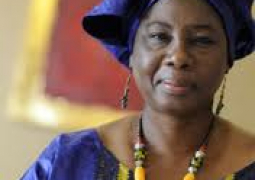
Key
facts:
· Violence against women - particularly
intimate partner violence and sexual violence - are major public health
problems and violations of women’s human rights.
· Recent global prevalence figures indicate
that about 1 in 3 (35%) of women worldwide have experienced either physical
and/or sexual intimate partner violence or non-partner sexual violence in their
lifetime.
· Most of this violence is intimate
partner violence. Worldwide, almost one third (30%) of women who have been in a
relationship report that they have experienced some form of physical and/or
sexual violence by their intimate partner.
· Globally, as many as 38% of murders of
women are committed by an intimate partner.
· Violence can negatively affect women’s
physical, mental, sexual and reproductive health, and may increase
vulnerability to HIV.
· Factors associated with increased risk
of perpetration of violence include low education, child maltreatment or
exposure to violence in the family, harmful use of alcohol, attitudes accepting
of violence and gender inequality.
· Factors associated with increased risk of
experiencing intimate partner and sexual violence include low education,
exposure to violence between parents, abuse during childhood, attitudes
accepting violence and gender inequality.
· There is evidence from high-income
settings that school-based programmes may be effective in preventing
relationship violence (or dating violence) among young people.
· In low-income settings, primary prevention
strategies, such as microfinance combined with gender equality training and
community-based initiatives that address gender inequality and relationship
skills, hold promise.
· Situations of conflict, post conflict and
displacement may exacerbate existing violence, such as by intimate partners,
and present additional forms of violence against women.
The United Nations General Assembly defines
“violence against women” as “any act of gender-based violence that results in,
or is likely in physical, sexual or mental harm or suffering to women, including
threats of such acts, coercion or arbitrary deprivation of liberty, whether
occurring in public or in private life.” The 1993 Declaration on the
Elimination of Violence against Women noted that this violence could be
perpetrated by assailants of gender, family members and even the “State”
itself.
Violence
against women and girls is one of the most widespread violations of human
rights. It can include physical, sexual, psychological and economic abuse, and
it cuts across boundaries of age, race, culture, wealth and geography. It takes
place in the home, on the streets, in schools, the workplace, in farm fields,
refugee camps, during conflicts and crises. It has many manifestations - from
the most universally prevalent forms of domestic and sexual violence, to
harmful practices, abuse during pregnancy,
Globally,
up to six out of every ten WOMEN experience physical and/or sexual violence in
their lifetime. A World Health Organization study of 24,000 women in 10
countries found that the prevalence of physical and/or sexual violence by a
partner varied from 15 percent in urban Japan to 71 percent in rural Ethiopia,
with most areas being in the 30–60 percent range.
Violence
against women and girls has far-reaching consequences, harming families and
communities. For women and girls 16–44 years old, violence is a major cause of
death and disability. In 1994, a World Bank study on ten selected risk factors
facing girls and women in this age group, found rape and domestic violence more
dangerous than cancer, motor vehicle accidents, war and malaria.
Studies
also reveal increasing links between violence against women and HIV and AIDS. A
survey among 1,366 South African women showed that women who were beaten by
their partners were 48 percent more likely to be infected with HIV than those
who were not.
Marital
rape is a prosecutor offence in at least 104 States, and 90 countries have laws
on sexual harassment. However, in too many countries gaps remain. In 102
countries there are no specific legal provisions against domestic violence, and
marital rape is not a prosecutor offence in at least 53 nations.
History
of violence against women
The
UN Declaration on the Elimination of Violence against Women (1993) states that
“violence against women is a manifestation of historically unequal power
relations between men and women, which have led to domination over and
discrimination against women by men and to the prevention of the full
advancement of women, and that violence against women is one of the crucial
social mechanisms by which women are forced into a subordinate position
compared with men.”
In
the 1870s, courts in the United States stopped recognizing the common-law
principle that a husband had the right to “physically chastise an errant wife”.
In the UK the traditional right of a husband to inflict moderate corporal
punishment on his wife in ORDER to keep her “within the bounds of duty” was
removed in 1891.
Impact
on society
The
World Health Organization reports that violence against women puts an undue
burden on health care services with women who have suffered violence being more
likely to need health services and at higher cost, compared to women who have
not suffered violence. Several studies have shown a link between poor treatment
of women and international violence. These studies show that one of the best
predictors of international violence is the maltreatment of women in the
society.
Types
of violence
Rape
Rape
is a type of sexual assault usually involving sexual intercourse, which is
initiated by one or more persons against another person without that person’s
consent. The act may be carried out by physical force, coercion, abuse of
authority or with a person who is incapable of valid consent, such as one who
is unconscious, incapacitated, or below the legal age of consent.
Internationally,
the incidence of rapes recorded by the police during 2008 varied between 0.1 in
Egypt per 100,000 people and 91.6 per 100,000 people in Lesotho with 4.9 per
100,000 people in Lithuania as the median. According to the American Medical
Association (1995), sexual violence, and rape in particular, is considered the
most underreported violent crime. The rate of reporting, prosecution and
convictions for rape varies considerably in different jurisdictions. Rape by
strangers is usually less common than rape by persons the victim knows.
Victims
of rape can be severely traumatized and may suffer from posttraumatic stress
disorder; in addition to psychological harm resulting from the act, rape may
cause physical INJURY, or have additional effects on the victim, such as
acquiring of a sexually transmitted infection or becoming pregnant.
Furthermore, following a rape, a victim may face violence or threats of thereof
from the rapist, and, in some cultures, from the victim’s own family and
relatives.
Domestic
violence
WOMENare
more likely to be victimized by someone that they are intimate with, commonly
called “Intimate Partner Violence” or (IPV). The impact of domestic violence in
the sphere of total violence against women can be understood through the
example that 40–70% of murders of women are committed by their husband or
boyfriend. Studies have shown that violence is not always perpetrated as a form
of physical violence but can also be psychological and verbal. In unmarried relationships this is commonly
called dating violence, whereas in the context of marriage it is called
domestic violence.
Instances
of IPV tend not to be reported to police and thus many experts believe that the
true magnitude of the problem is hard to estimate. Women are much more likely
than men to be murdered by an intimate partner. In the United States, in 2005,
1181 women, in comparison with 329 men, were killed by their intimate partners.
In England and Wales about 100 women are killed by partners or former partners
each year while 21 men were killed in 2010. In 2008, in France, 156 women in
comparison with 27 men were killed by their intimate partner.
Though
this form of violence is often portrayed as an issue within the context of
heterosexual relationships, it also occurs in lesbian relationships
daughter-mother relationships, roommate relationships and other domestic
relationships involving two women. Violence against women in lesbian
relationships is about as common as violence against women in heterosexual
relationships.
Diagnosis
planning
Recommendations
for clinicians making a diagnosis of Marital Relational Disorder should include
the assessment of actual or “potential” male violence as regularly as they
assess the potential for suicide in depressed patients. Further, “clinicians
should not relax their vigilance after a battered wife leaves her husband,
because some data suggest that the period immediately following a marital
separation is the period of greatest risk for the women. Many men will stalk
and batter their wives in an effort to get them to return or punish them for
leaving. Initial assessments of the potential for violence in a marriage can be
supplemented by standardized interviews and questionnaires, which have been
reliable and valid aids in exploring marital violence more systematically.”
The
risk of violence remains strong in a marriage in which it has been a feature in
the past. Thus, treatment is essential here; the clinician cannot just wait and
watch.”]The most urgent clinical priority is the protection of the wife because
she is the one most frequently at risk, and clinicians must be aware that
supporting assertiveness by a battered wife may lead to more beatings or even
death.
UN
Women’s Approach
UN
WOMEN works on several fronts towards ending violence against women and girls.
This includes tackling its main root: gender inequality. Efforts are multiplied
through advocacy campaigns and partnerships with governments, civil society and
the UN system. Initiatives range from working to establish legal frameworks and
specific national actions, to supporting prevention at the grassroots level,
including in conflict and post-conflict situations. UN Women has also supported
data collection on violence against women, facilitating new learning on the
issue.
UN
Women plays an active role in supporting the UN Secretary-General’s multi-year
Unite to End Violence against Women campaign, launched in 2008. As a designated
coordinator, UN Women works together with the UN system and other partners on
the campaign’s regional components in Africa and Latin America and the
Caribbean.
Further
information about this topic are AVAILABLE at the UN office in the Gambia and
the UN website on violence against women and the violence in human right
or send email to
azadehhassan@yahoo.co.uk or text only on 7774469. 3774469.
Author
DR AZADEH Senior Lecturer at the University of the Gambia, Senior Consultant in
Obstetrics & Gynaecology, Clinical Director of Medicare Health Services.
Read Other Articles In Article (Archive)
Global position system training wraps-up
Aug 17, 2010, 2:57 PM




